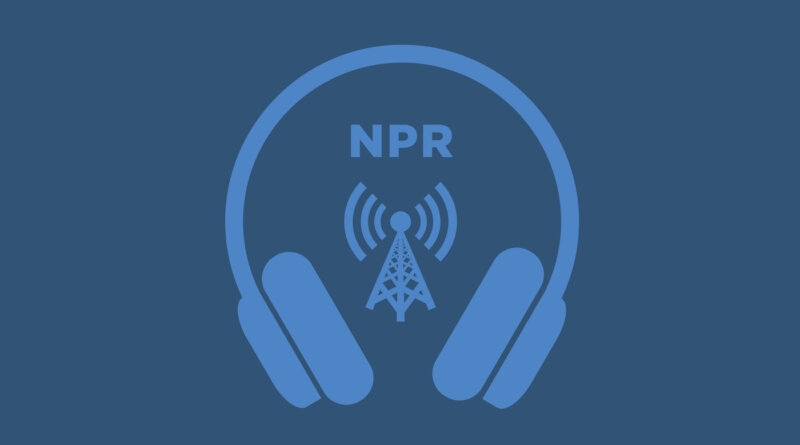Research in Alabama’s Mobile Bay could have value for oyster reef restoration : NPR
Researchers in Alabama are trying to toughen up baby oysters so they can better withstand predators. It’s all part of an effort to restore oyster reefs around the world.
MARY LOUISE KELLY, HOST:
It may not be top of mind when you think of protecting our shores from climate change, but oyster reefs are an important natural resource towards that end. And in Alabama, researchers are working to restore the reefs, and that involves toughening up baby oysters against predators to increase their survival rate in the big, bad undersea world of Mobile Bay. Guy Busby with Alabama Public Radio reports.
(SOUNDBITE OF WAVES CRASHING)
GUY BUSBY, BYLINE: Near the small fishing port of Bayou La Batre, eight people in hip-deep water unload hundreds of sacks of oyster shells.
LEE SMEE: We spawn oysters. We settle those onto the shells.
BUSBY: Lee Smee is with the Dauphin Island Sea Lab, a marine research center on Alabama’s Gulf Coast. Here in Mobile Bay, they’re trying to rebuild oyster reefs that have been destroyed by overharvesting. Today Smee and his team are putting out up to 20 million baby oysters that grew in a lab.
SMEE: We grow them for a month, and then we bring them out, and we put them out. So there’s baby oysters on the shells when we put them out. And the reason we started doing that – the populations of oysters have gotten so low, there’s just not enough naturally occurring spawning going on.
BUSBY: The little lab oyster babies are about the size of a dime and grow best when stuck on the larger oyster shells. This process is called spat on shell. Baby oysters are called spats. These babies also get an advantage. While growing in the lab, crab urine is mixed with their water.
SMEE: The experimental side is part of that spat on shell gets exposed to a predator cue – in this case, a blue crab that’s caged that we’ve been feeding oysters to.
BUSBY: So when a baby oyster senses its predator cue, it reacts.
SMEE: That makes some of the oysters toughen up their shells. So oysters are known to toughen up, harden their shells when predators are around.
BUSBY: So here in Mobile Bay, Smee says half the oyster babies have been exposed to the crab urine and the others have not.
SMEE: Last year we found that mortality in the ones that were not exposed to predators after about six months was 90%, which isn’t terribly unexpected for oysters. I mean, they spawn a lot, and a lot of them die. But that rate was only, like, 70% in the ones that had predator cues.
BUSBY: Oyster reefs are important for estuary ecosystems like this one. They help protect the coastline and provide food for many other marine species. What’s now needed is a way to grow stronger oysters on a commercial level, says Ben Belgrad, a scientist at Dauphin Island Sea Lab.
BEN BELGRAD: Before, we were doing this in little containers, toughening up maybe a couple hundred oysters at a time. That’s not going to work for reef restoration. We need to be able to do this to millions of individuals simultaneously.
BUSBY: The idea is to recreate the chemicals that trigger shell growth.
BELGRAD: Our next goal with this is actually to be able to identify the molecules that the predators are releasing and be able to just synthesize those in the lab and fertilize our oysters with them like we fertilize our crops with nitrogen to make them grow bigger.
BUSBY: Two of those molecules, Belgrad says, have already been identified by a lab at Georgia Tech, and that research is ongoing. It’s all part of a worldwide effort to restore oyster reefs. Matthew Ogburn is an oyster reef restoration scientist with the Smithsonian Environmental Research Center. He says there are experiments rotating harvest areas to allow oysters time to grow and breeding disease-resistant oysters.
MATTHEW OGBURN: There’s a lot of different research projects going on to try to figure out how – what the best methods are for oyster restoration.
BUSBY: And he says this research in Mobile Bay could potentially have a lot of value for oyster reef restoration going forward. For NPR News, I’m Guy Busby in Bayou La Batre, Ala.
(SOUNDBITE OF MAE STEPHENS SONG, “IF WE EVER BROKE UP”)
Copyright © 2023 NPR. All rights reserved. Visit our website terms of use and permissions pages at www.npr.org for further information.
NPR transcripts are created on a rush deadline by an NPR contractor. This text may not be in its final form and may be updated or revised in the future. Accuracy and availability may vary. The authoritative record of NPR’s programming is the audio record.




